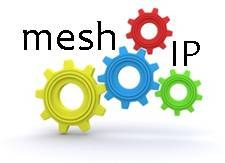 Cloud computing, an industry dependent on the availability of high-speed internet connectivity, grew on the realisation that internet bandwidth could be used for more than just downloading large files.
Cloud computing, an industry dependent on the availability of high-speed internet connectivity, grew on the realisation that internet bandwidth could be used for more than just downloading large files.
However, the cloud’s initial lustre is starting to wear off and businesses are starting to query why they should move to the cloud and what happens once that leap is taken.
The sales pitch of cloud computing is pretty simple: why bother running your own storage and application servers when you can outsource the whole shebang to an outside company that will take care of everything. But despite all the hype and marketing, cloud services have yet to go mainstream, both in the consumer and business markets.
Phil Worms, director of corporate communications at hosting firm Iomart, explained that those organisations which immediately saw the benefits of cloud have for the most part made the move, but firms that are less sure of the advantages require “more hand-holding”.
While cautious firms may require more convincing, the questions they are asking should benefit those that have already taken the plunge. Issues regarding security and service level agreements (SLA) are coming into play as the cloud services industry is, as Worms put it, “growing up”.
Surprisingly, the growing pains are being felt not by the customers but cloud server providers, who are being asked to provide more ‘soft’ services and guarentees.
Not only are they having to compete among themselves in the private cloud market but against public clouds such as those provided by Amazon and Google. It’s a daunting prospect going up against two of the biggest internet brands, but for Iomart it all comes down to service levels.
“SLAs are the battleground,” said Worms, pointing out that public cloud providers such as Amazon and Google do not offer SLAs. He said Iomart’s customers were increasingly asking what happens if their data “disappears”.
It’s a thought that would send a chill down any system administrator’s spine, regardless of how rigorously thought out their data backup and recovery plan is.
SLAs have been commonplace in the IP transit and co-location industry for decades and are often used by firms to differentiate services. An SLA not only holds the provider accountable but gives customers the assurance that they will at least be financially compensated should a failure actually occur.
The fact that SLAs are coming to the world of cloud computing is a sign that the sector is maturing, something that should help to allay the concerns of firms that have yet to adopt the model.
The requirement to meet SLAs is putting increased pressure on cloud providers and their suppliers. The sheer volume of servers that are needed to provide cloud services raises a host of logistical issues, according to Worms, such as the availability of spare parts. For Iomart to meet its SLAs, its suppliers, such as HP, must be able to deliver the parts Iomart needs, when it needs them.
To support customers such as Iomart, HP runs its Server Express programme, which offers pre-configured servers geared towards saving its customers time in the deployment phase.
According to David Chambers, technology director of enterprise business at HP UK and Ireland, “Customers want to shorten the supply chain, and expect the process from order to delivery to be within 10 to 15 days.” Chambers added that that time-frame includes testing, packaging and delivery.
When pressed on whether the increased volume of servers cloud providers such as Iomart were running would result in HP running a curtailed testing period to meet demand, Chambers was categorical: “Size does not mask testing at HP, we do not operate under a fail and recover model.”
The fail and recover model, which has high-profile proponents such as Google, is not feasible when it comes to providing cloud-based services for financial firms, said Chambers. Financial transactions need to complete with a known and guaranteed probability, he said, adding that “fail and recovery is still a fail “, and that’s just not good enough for some.
As the number of servers HP ships increases, Chambers said HP has to lower its failure rate to remain competitive. The economies of scale, according to Chambers, “put an onus on HP to lower failure rates, but in way that doesn’t impact on product price”.
The challenge facing HP is quite simple, said Chambers: “Customers want availability without the premium.”
Chambers’ comments highlight the need for SLA awareness at the foundation of the supply chain. However, the actual hardware is only part of the puzzle for cloud service providers. Arguably even more important is the network, something that cannot be replaced in 10 to 15 days.
“The cloud needs to move from being enterprise grade to telco grade,” said Houston Spencer, Alcatel-Lucent’s vice-president for marketing and customer solutions, Northern Europe. He said research conducted by Alcatel-Lucent showed users would be willing to pay for application enhancements that were delivered by the cloud, but only if they were available on demand and on time.
Network equipment manufacturers such as Alcatel-Lucent are seen as the backbone of any cloud service. As datasets grow, the interconnects between banks of servers will become a large factor in determining whether a provider can offer a competitive SLA.
Firms such as Iomart will need to work with others that understand the need to provide not just a service but one that can be accountable. As Worms said, customers are becoming increasingly demanding, and in order to meet those demands, all aspects of operation must be considered if a service provider is to remain ahead of the pack.
- The Customer Edge Drives the Need for NaaS - June 25, 2023
- Blockchain Evolves And Secures - January 13, 2019
- Bessemer Ventures’ 2018 Cloud Computing Trends - February 25, 2018




